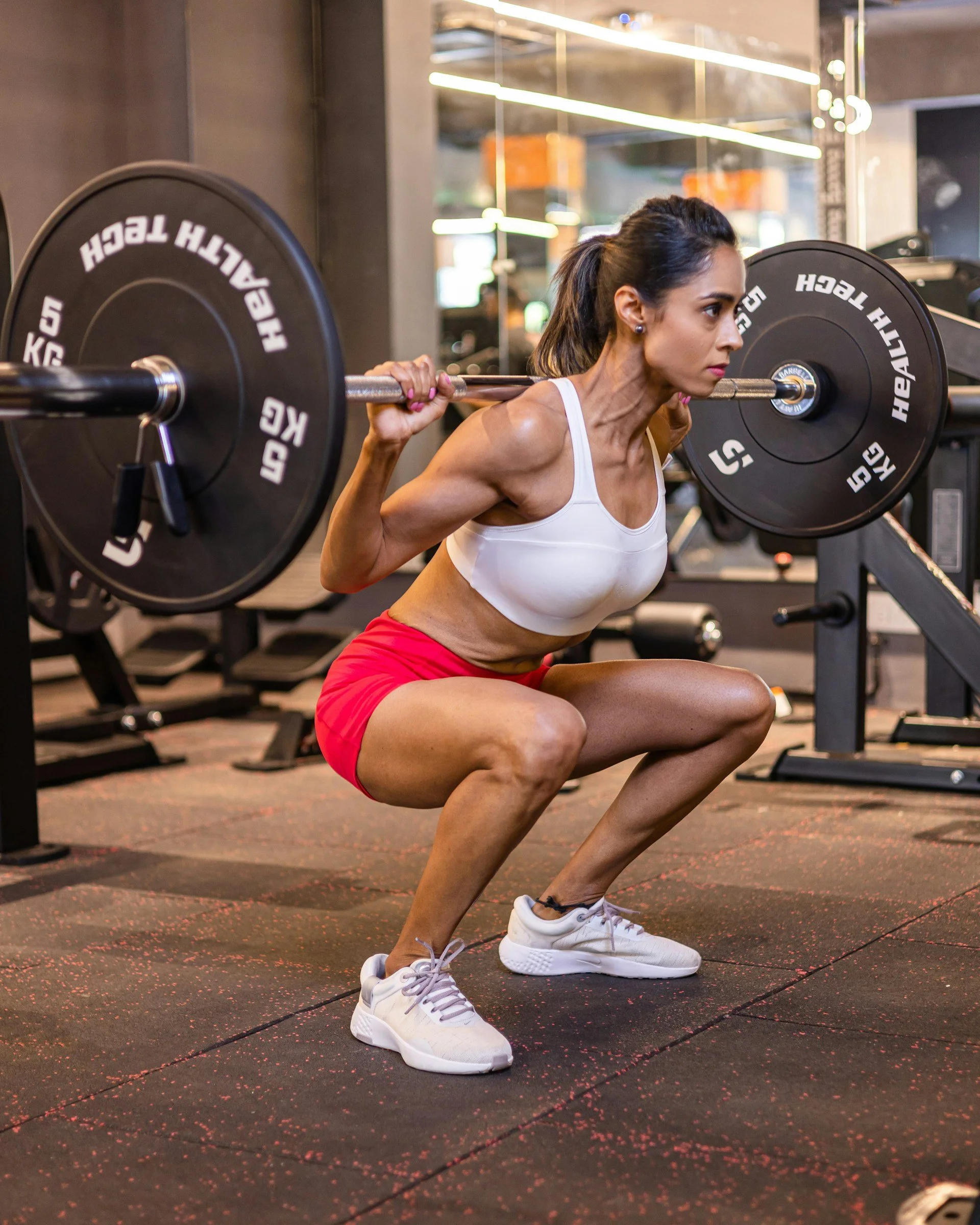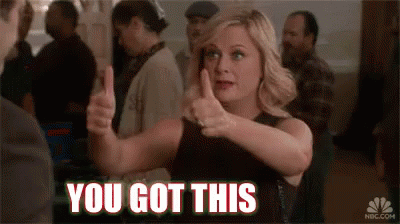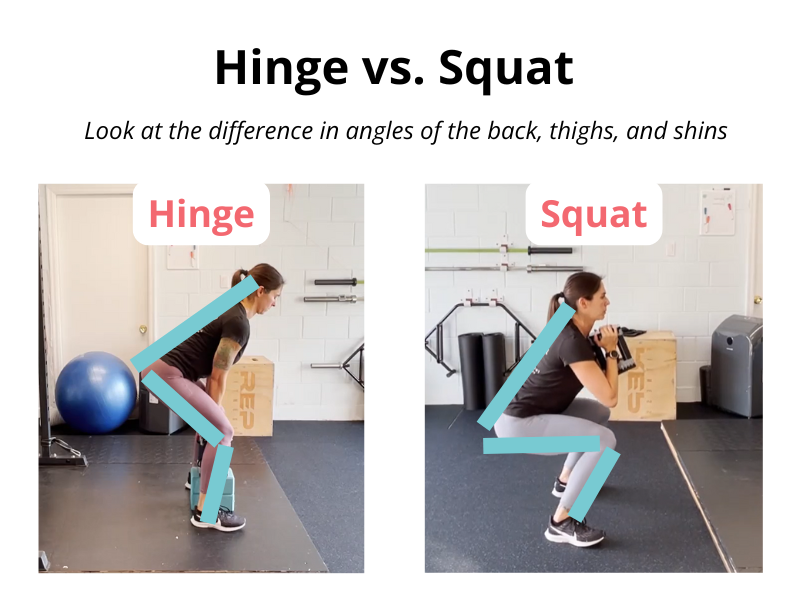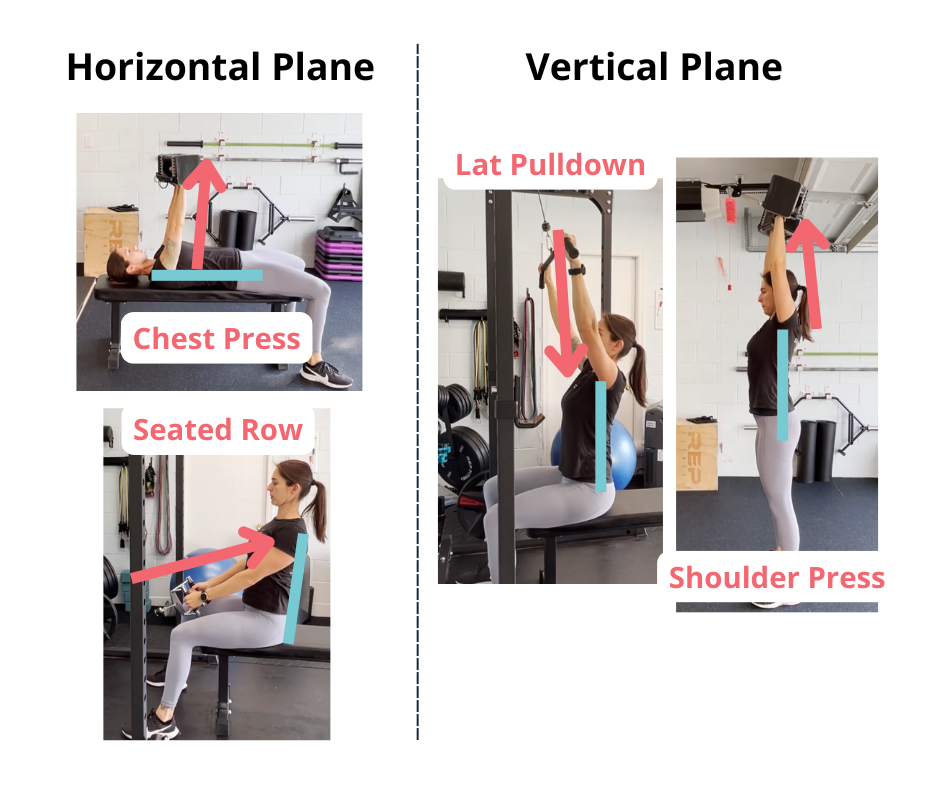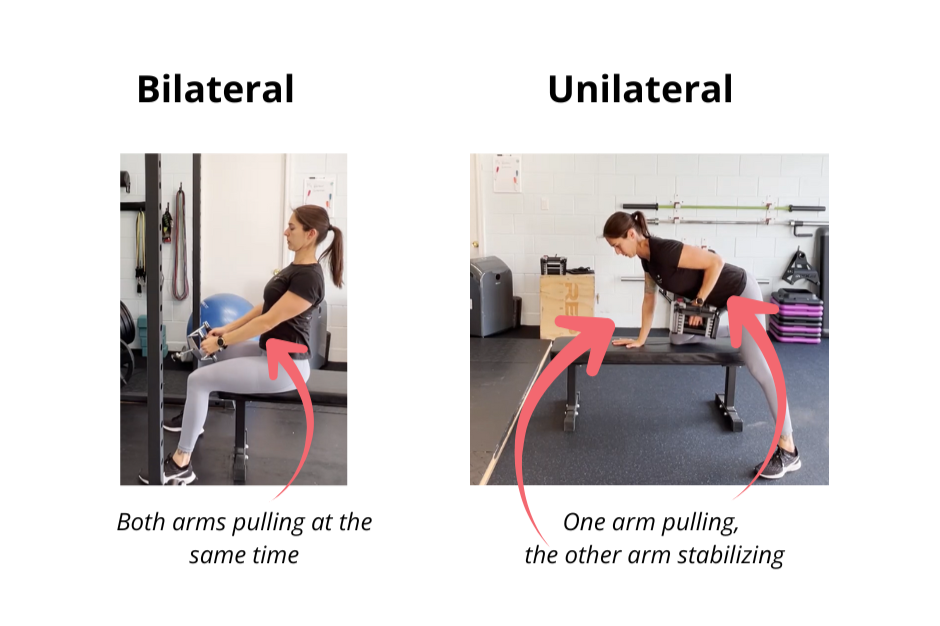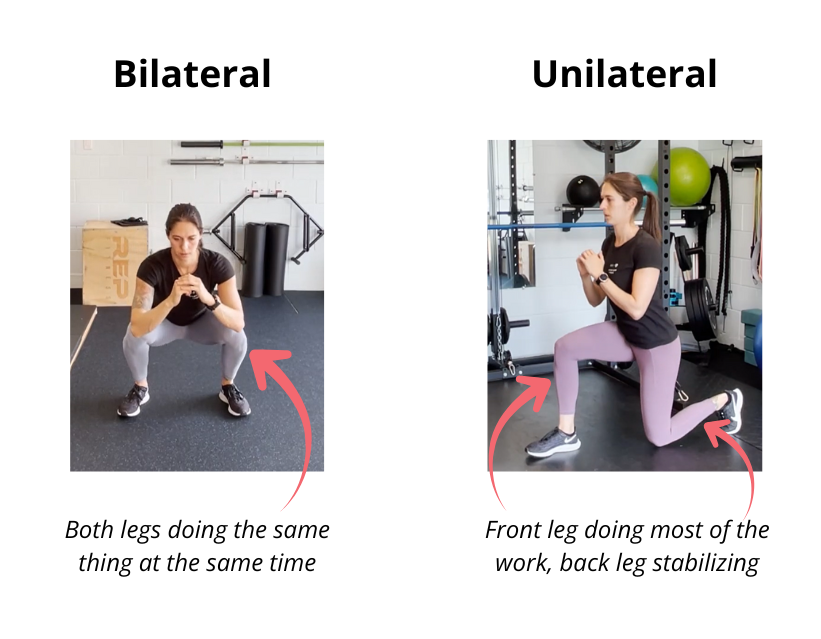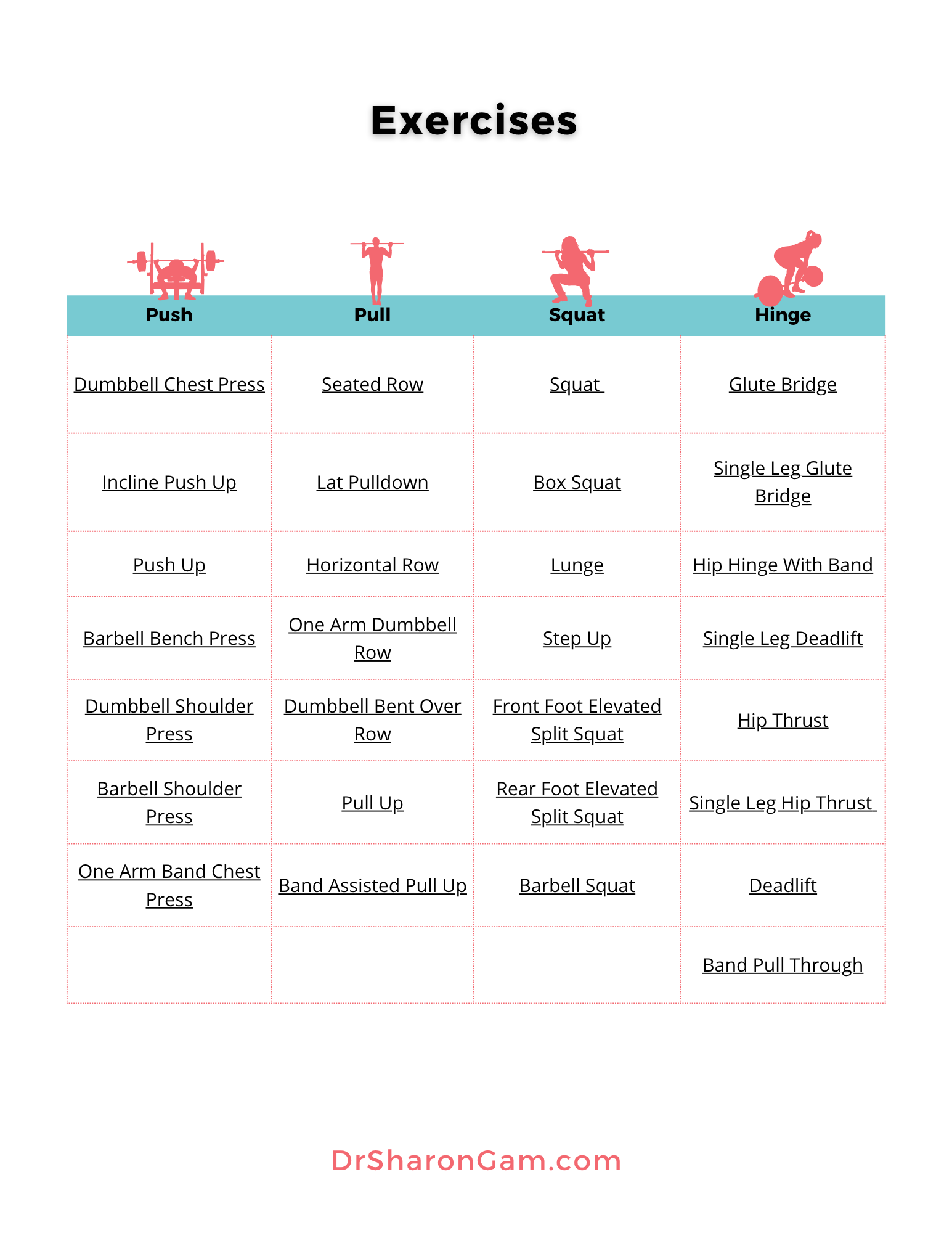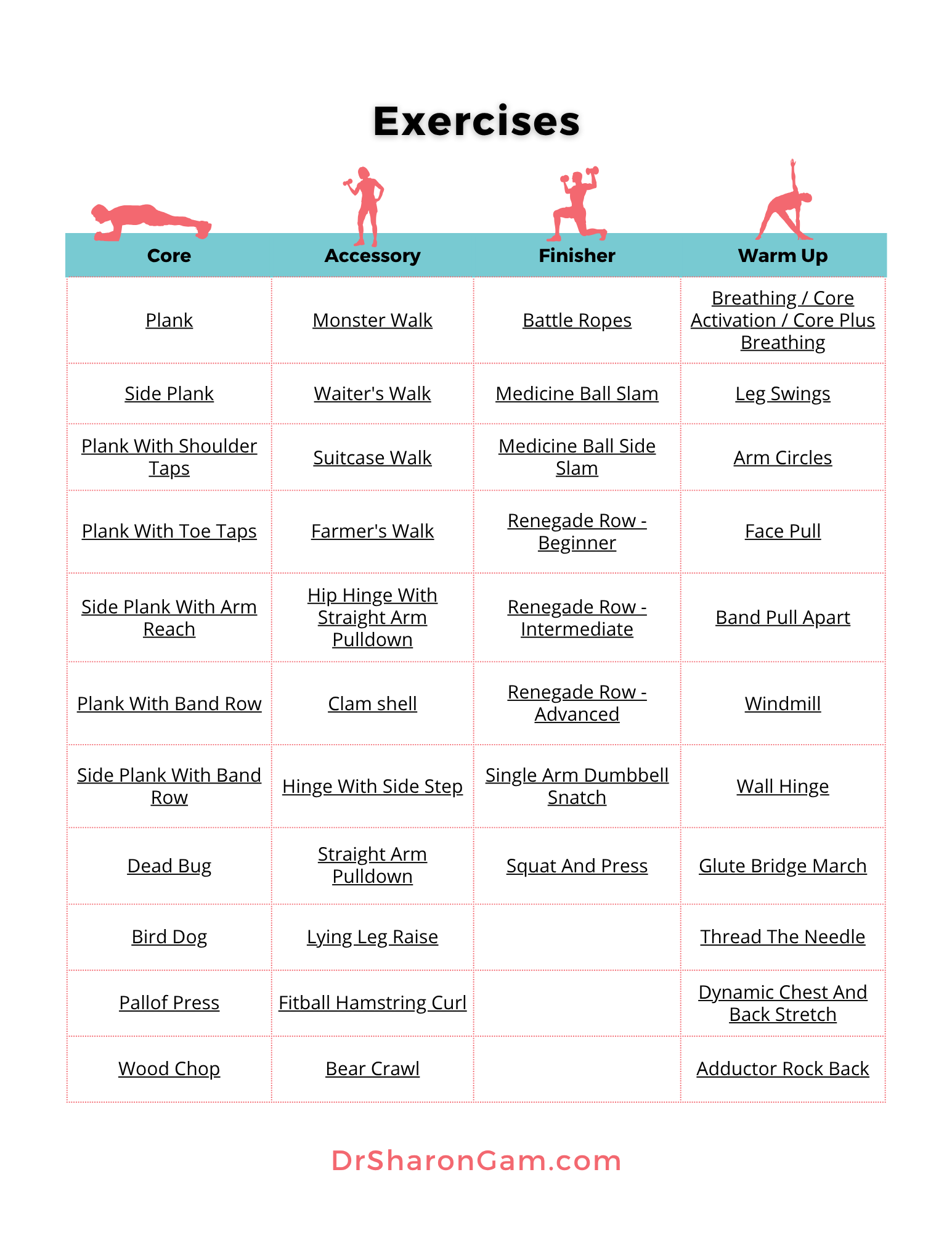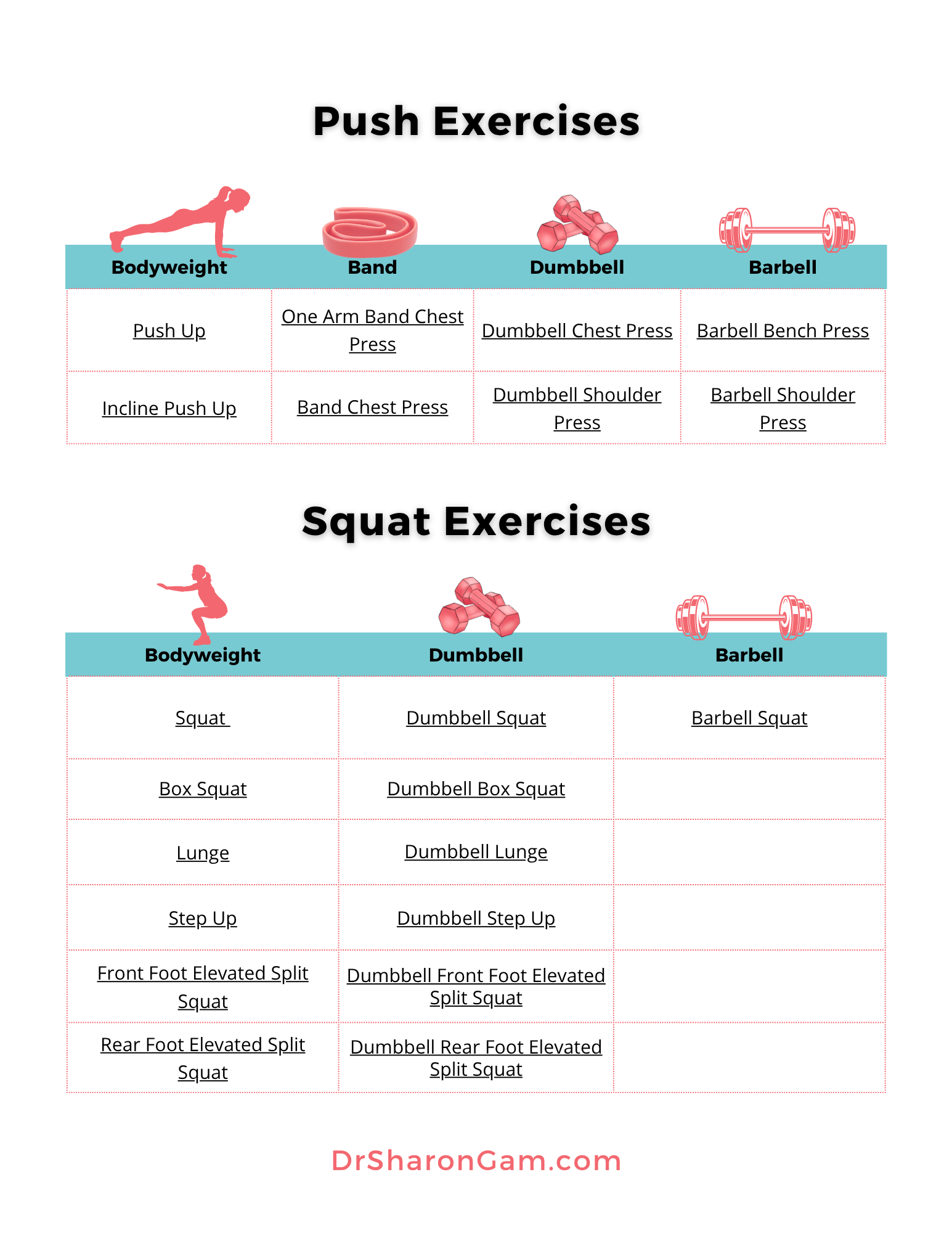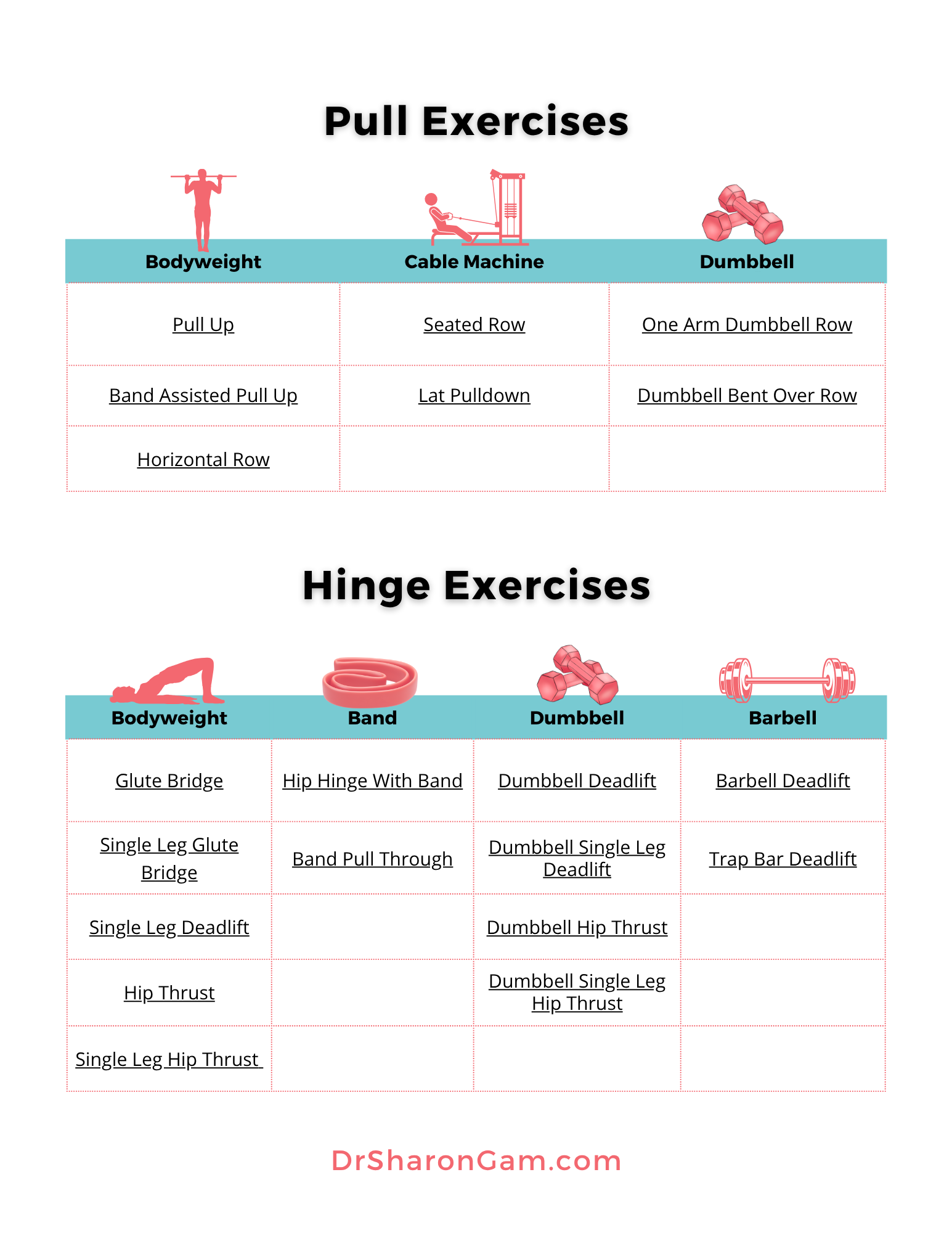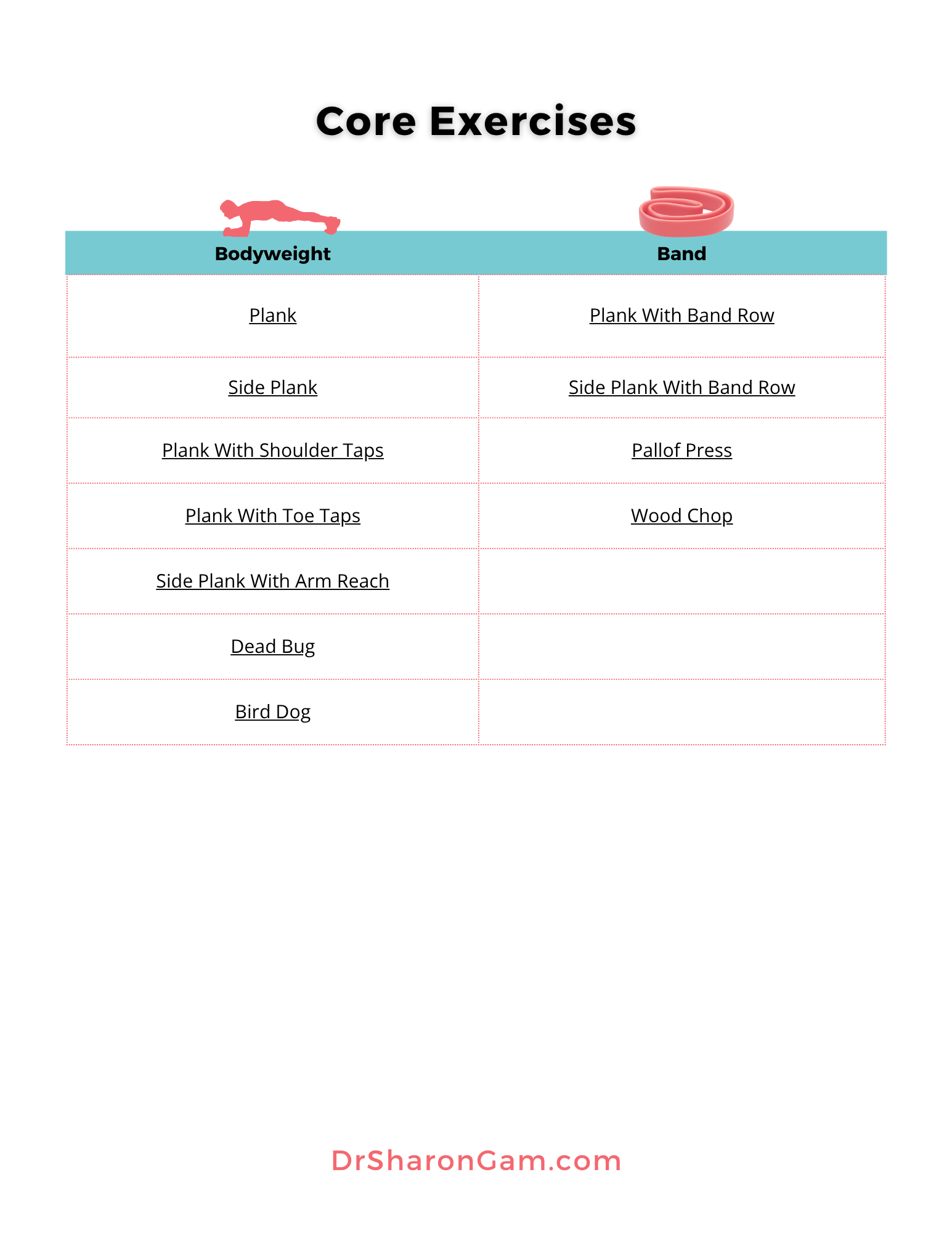How To Substitute Exercises
Here’s a common strength training problem: you need to substitute an exercise that’s included in your workout.
Maybe you’re training at home and don’t have the right equipment. Maybe you’re at the gym and someone is using the machine you need. Maybe that specific exercise feels uncomfortable on your joints or you can’t get your body into the right position.
Here, I’ll share a simple framework to help you find an appropriate replacement exercise so you can confidently continue your workouts.
Before I get started, please know that it’s very common to have to swap or modify exercises, and doing something is always better than doing nothing. Don’t get too hung up on the details. If you don’t choose exactly the right replacement exercise, or if you have to skip an exercise because you can’t find a replacement, that’s ok. The most important thing is that you strength train consistently over time. “Don’t let perfect be the enemy of good enough.”
Categorizing Exercises By Movement
Many workout programs divide exercises by the muscles they work. For several reasons, which you can learn about in my article on Why You Should Train Movements, Not Muscles, that’s not the best way to think about your exercises. Instead, let’s think about exercises in terms of movement patterns.
There are five fundamental movement patterns that are essential to include in your workout program: Push, Pull, Squat, Hinge, and Core. There are additional movements that are also important (like Rotations and Carries), but let’s start with the main five.
The Five Movement Categories
Push
The push movement is involved in any exercise where you’re pushing something away from your upper body. That might be a push up, where you push your body away from the floor, or any exercise with the word “press” in it, like a bench press, chest press, or shoulder press. Push movements work your chest, shoulders, and triceps.
Pull
The pull movement is the opposite of a push. You’re pulling a weight towards yourself or pulling yourself towards something. Pull ups and chin ups are in this category, as is any exercise with the word “pull” or “row” in it. Pull movements work your back, shoulders, and biceps.
Squat
Squat exercises usually have the word “squat” in the name. I put lunges into this category, since they are basically squats where one leg is doing most of the work at a time. Step ups are also in the squat category.
Squats work the big muscles in your legs, especially your quads but also your hamstrings and glutes.
Hinge
A hinge is when you bend at the waist, lowering your upper body towards the ground while your knees stay relatively straight. That’s different than a squat, which is when you bend at the waist and at the knees about equally.
Hinges build strength in your back and legs with exercises like deadlifts and hip thrusts. Like squats, hinges also work the big muscles in your legs but focus more on the muscles on the back of your body including your hamstrings and glutes. They also strengthen your lower back. Mastering a good hinge movement is very important for preventing injury and keeping your back healthy.
Core Activation
Core activation is more of a skill than a movement, and learning to activate your core properly is incredibly important for protecting your spine and moving effectively.
Once you know how to activate your core, you can strengthen it with exercises like the plank and dead bug.
Planes of Motion
Within the push and pull categories, some exercises have you moving horizontally and others vertically. It’s important to include both horizontal and vertical pushing and pulling, since each works slightly different muscles.
In the horizontal plane, you’re pushing or pulling from in front of you, with your arms perpendicular to your body.
In the vertical plane, you’re pushing or pulling a weight above your head, with your arms parallel to your body.
Examples of horizontal pushes are push ups, dumbbell chest presses and bench presses. Shoulder presses are vertical pushes.
Examples of horizontal pulls are seated rows and one arm rows. Vertical pulls are pull ups and lat pulldowns.
Limb Symmetry
There’s also a difference between exercises that work your body symmetrically and those that work one limb or one side of your body at a time.
An exercise where both limbs move together is called a bilateral exercise. Exercises where the limbs move independently are called unilateral exercises.
For example, a squat is a bilateral exercise and a lunge is a unilateral one. A seated row is a bilateral pull exercise and a one arm dumbbell row is a unilateral pull exercise.
Bilateral (double limb) exercises are more stable, so you can usually lift more weight and gain more strength with those exercises. Unilateral (single limb) exercises often challenge your balance, core, and stabilizer muscles to a greater extent. The more you challenge your balance and core stability, the better those will get.
It’s important to include both bilateral and unilateral exercises across your workouts if possible. When you’re swapping a bilateral exercise you should try to replace it with another bilateral exercise, and when you’re swapping a unilateral exercise you should try to replace it with another unilateral exercise.
The exception is if you can’t safely balance or stabilize yourself, then you might want to swap a unilateral exercise for a bilateral one.
Body Position And Ability Level
If you have chronic dizziness or another condition that makes it difficult for you to put your body in a certain position, you can swap an exercise for one that puts you in a more comfortable posture.
For instance, if lying flat on your back triggers your symptoms, you can swap a dead bug exercise for a palloff press, which works your core in a standing position instead of lying down. If having your head facing down is triggering for you, you can swap a one arm row exercise for a single arm seated row where you’re doing the same motion but sitting upright.
If a particular exercise is beyond your current strength or ability exercise, you can swap it for a scaled down version.
The box squat exercise is a great example of this. Many people have trouble with bodyweight squats and aren’t able to lower themselves all the way to the bottom position because they don’t have the strength or stability (yet!). In that case, a box squat, where you rest your weight on a box or bench at the bottom of the movement, makes the exercise more achievable.
Pain
If there’s an exercise or position that causes pain, start by reducing the range of motion. For example, if a deep squat hurts your knees, you may need to start with a shallow box squat until you build the strength and mobility to go deeper. If even a shallow range of motion causes pain, you should swap that exercise for another one that doesn’t cause that same issue.
If you feel pain with certain exercises, I highly recommend consulting with your doctor or healthcare provider to see if there’s an underlying issue that needs treatment. If you have specific limitations, you may need to consult a fitness professional for personalized recommendations on how to work around those.
How to Swap Exercises
1. Identify which movement category the exercise is in.
Let’s say there’s a dumbbell chest press in your workout but you don’t have access to dumbbells. First, identify that exercise as a push exercise.
If it’s a lunge exercise but lunges cause pain in your knees or feet, first identify that lunges are in the squat category.
I’ve included a list of exercises categorized by movement category at the bottom of this article.
2. Think about the details.
For upper body exercises, what plane of motion is the movement: horizontal or vertical? Does the exercise use both limbs together doing the same motion, or are you using one limb at a time?
In a dumbbell chest press, you’re pushing the dumbbells away from your chest with your arms perpendicular to your body. That makes it a horizontal push exercise, and since both arms are doing the same thing at the same time, it’s a bilateral exercise. A lunge exercise has each leg moving separately, so it’s a unilateral exercise.
3. Choose a new exercise that fits your needs.
The most important thing is to stay within the same movement category. If possible, also keep the new exercise within the same plane of motion and limb symmetry. If that’s not possible, it’s ok. Do the best you can.
For the dumbbell chest press, you might choose an incline push up instead. Both exercises are bilateral horizontal push exercises.
For the lunge you might choose a step up, which is also a unilateral squat exercise but keeps the knees and feet in a more comfortable position for many people.
At the bottom of this article I’ve included a list of exercises in each movement category, divided by the equipment needed.
The lists below obviously don’t represent all the exercises that exist. If you can’t find an exercise in these lists that fits your criteria, you can do an internet search using the framework in this article. Try something like “bilateral pull exercise using dumbbells”.
In my programs I use mostly free weights, but you can also use weight machines if you’re working out in a commercial gym. Each equipment company makes their machines a little differently, but they are usually labelled with the name of the exercise and the muscles being worked. Look for a machine that matches the movement pattern you’re trying to do.
If You Need Help
To get started on your strength training journey, download my FREE Strength Training 101 eBook. You’ll learn how to structure your strength training workouts, including how to choose the number of sets and reps you do as well as how to progress your workouts over time.
For a pre-made program, check out my Strength Training for Anxiety course. This 12-week workout program includes detailed guidance and instructions as well as video lessons to teach you how to use your strength training workouts to decrease anxiety, build resilience, and calm your nervous system.
For personalized guidance, contact me. I offer in-person and online personal training to help you achieve your goals.
